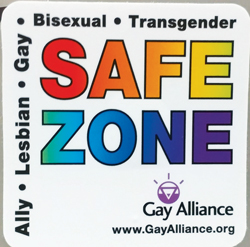According to Reuters Health, a growing number of United States schools are increasing school safety and accommodations for LGBTQ+ students. The study, which addressed high schools and middle schools in the United States, found that there was an increase in anti-harassment policies and designated safe spaces for those who might be in need of counseling or help.
The study, which looked at data collected nationwide from questionnaires in 2008, 2010, 2012, and 2014, found that in general, school policies were trending toward the support of LGBTQ+ students.
While colleges are not the subject of the study, researchers indicated that higher education facilities were also increasing their support of LGBTQ+ students.
Monmouth University has worked to support LGBTQ+ students on campus, including the rollout of gender-neutral bathrooms in 2016 and the presence of Sexuality, Pride, Education, Community, Truth, and Unity at Monmouth (SPECTRUM), an LGBTQ+ organization, on campus. Many professors and administrators also have stickers on their doors marking their office as a ‘safe zone’ for LGBTQ+ issues, and the office of counseling and psychological services is also available to students.
Johanna Foster, Ph.D. Director of Sociology and assistant professor of political science and sociology said, “We do have individual staff and faculty committed to creating and protecting safe spaces for all students, including folks working in the Office of Equity and Diversity, the Office of Counseling and Psychological Services, and faculty that are part of Professors United for a Safe Haven (PUSH), and the university has made important strides against heteronormativity in the 15 years that I have been here.”
However, some students believe that the University could do more to accommodate LGBTQ+ students.
“While I believe that Monmouth is a safe space for LGBTQ+ students, I feel that there is still room for improvement when it comes to accommodating them on campus,” said Jesse Lee, a sophomore social work student.
The need for LGBTQ+ accommodating housing was mentioned several times as a way Monmouth could improve.
“When it comes to things such as housing, I feel that it is important to include students who fall outside of the sexual/gender binary,” said Lee. “Therefore, we must give them a space where they have the ability to be themselves, without worrying about being ostracized by their peers.”
A list by collegechoice.net also provided insight into what created an LGBTQ+ friendly campus in their 2017 ranking of the “50 Best Colleges for LGBTQ+ Students.” Key things mentioned included a non-discrimination policy including gender expression and sexual orientation, which Monmouth does have, as well as comprehensive health care, a safe campus in regard to LGBTQ+ hate incidents, and a curriculum and faculty board which is representative of LGBTQ+ communities.
The list, which was compiled based on the features above, as well as many other factors- such as college affordability and academic reputation- included schools such as Princeton University, the University of California Los Angeles, and New York University.
Many of the schools also featured expansive campus groups, much like SPECTRUM at Monmouth, based around supporting LGBTQ+ students on campus.
Other school features mentioned included the student’s ability to easily update their name and pronouns in the school’s information systems- as is the case at Lehigh University, as well as several other institutions- and health insurance which covers counseling services, hormone replacement, and LGBTQ+ support groups.
While Monmouth University has made steps to embrace and accommodate LGBTQ+ students on campus, it is clear that more could be done to help students feel at home.
“From what I’ve seen, Monmouth needs to pay more attention to its growing LGBTQ+ community and work on accommodating their needs,” said Taffy Lashley, a sophomore communication student.
“The money they put into athletics and the upkeep of our well-maintained campus could be used to create LGBTQ+ living spaces, increase the number of gender-neutral bathrooms, and to fund student clubs such as SPECTRUM. There also needs to be more of a zeal in its student body, which will hopefully change over time,” Lashley continued.
“Like many other colleges and universities, we are not tackling institutional inequalities head on in ways that we could be, and that is true for the mechanisms of sexism and heterosexism as well,” Foster said.
“We do not have open conversations about the cultural crisis of hegemonic masculinity, which has heterosexism and homophobia as part of its core, and its impact on so many levels of social organization, whether it is in our conversations about sexual and gender violence on campus, or about micro-aggressions, or about gun violence,” she continued.
“In order to improve [LGBTQ+ accommodation], the higher-ups at Monmouth University must address this issue directly,” said Lee. “While it is wonderful that they hold the value of respecting and loving everyone regardless of who they love and how the identify to a high regard, there is no progress unless they are willing to actually do something about it.”
PHOTO TAKEN by Alexandria Afanador




